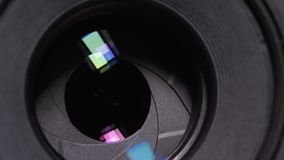Have you ever wondered what the difference is between an F-Stop aperture lens and a T-Stop aperture lens?Have you searched for or searched for these answers and not found them?This article will explain in a practical way the differences between the F-Stop and T-Stop photographic lenses.
F-Stop aperture is a theoretical value based on focal length, while the T-Stop aperture is a tested real value, but what does that mean?For example, two lenses such as the Ottos of 55 mm and 85 mm, with an aperture of f / 1. 4 F-stop, will offer different lighting values depending on the focal length of each lens, while the Otto 55 mm lens with T-stop will inform T1 . 5, and the 85 mm lens with T-stop will indicate proportionally T1. 7.
- The goals that use it? Tea as a reference these are usually professional objectives focused on videos.
- Because with this system you have the most real dimensions of data transmission numbers of their respective values.
- Which facilitates the editing of videos.
Which brings us to the question you’re probably wondering now: why do most photographic lenses use F-Stop aperture and movie lenses use T-Stop aperture?According to Wolfcrow, there are three reasons why photo lens manufacturers don’t. I don’t care about the T-stop.
In cinematography, on the other hand, it’s more complicated. Multiple scenes captured over several days and often composed of multiple angles captured with more than two lenses with a T-Stop aperture, means that exposure correction in the final result can be more expensive.
However, investing in a lens with this new technology can indicate future savings in lens changes, photographic equipment and yet they are very affordable and deliver professional results at low cost.
F-Stop aperture technology remains a viable and more affordable option for filmmakers today, but the goals of professional cinema ensure minimal exposure of T-Stops opening values.
The following video we found explains this difference in a more abstract and didactic way, but until now it was only available in English:

